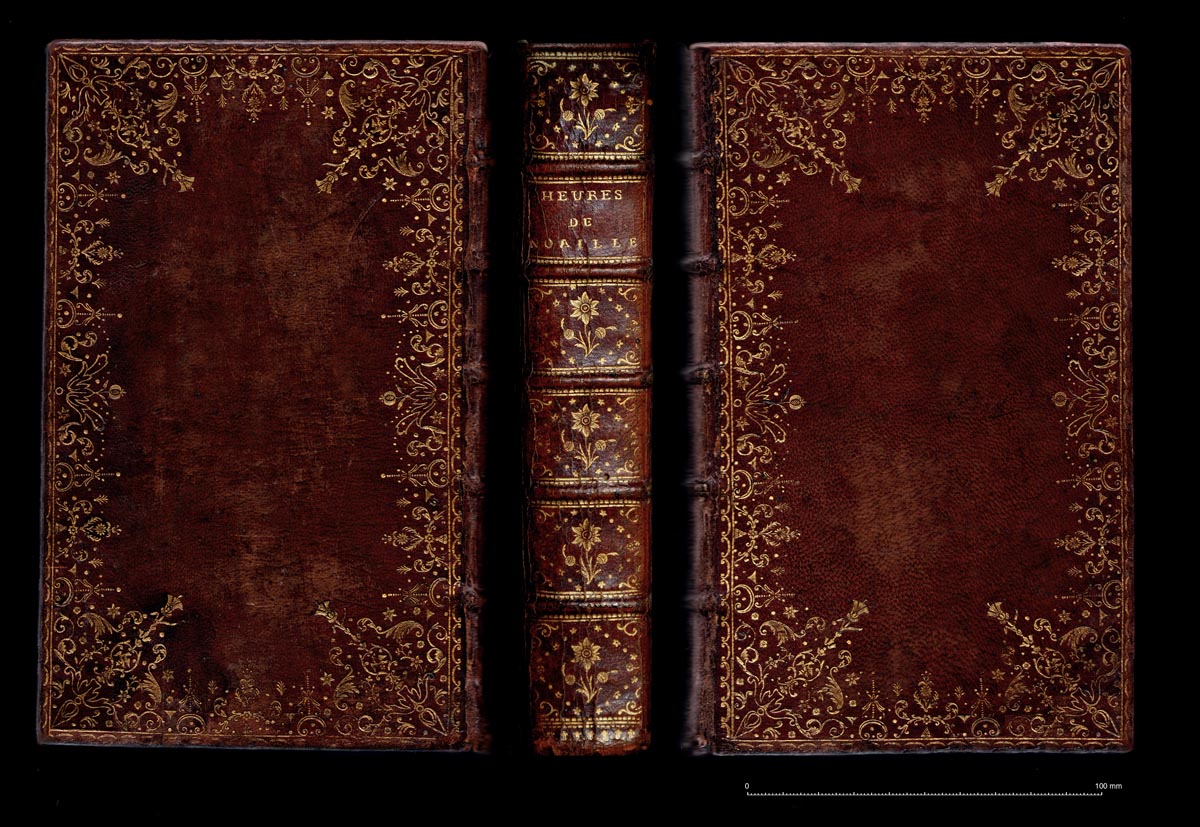

| Pictured above is a virtual reproduction of an possibly early dentelle à l'oiseau by Pierre-Paul Dubuisson. I have made only a few small cosmetic changes to restore this treasure that was recently recovered from eBay. Inside this elaborately decorated binding is found a 1716 Book of Hours, printed by order of Monseigneur, the Cardinal of Noailles, Archbishop of Paris; for the usage of his Diocese. As we can see here a number of obvious Dubuisson imprints one is forced to conclude that this book was rebound in this sumptuous moroccan leather more than 30 years after it's publication. The value of this wonderfully preserved Dubuisson example is greatly magnified by the fact that many of the gold tooled imprints appear to be exceptionally clear and sharp. (Click on the image to see an enlargement). Here for the first time I am able to extract very precise imprint specimens, which will serve as an invaluable reference to the tools and decorative bindings by Dubuisson. Some of these imprints I have already catalogued, while others are new to me and places must be found for them in our rapidly expanding collection. Let us now proceed to a high resolution examination of some of the more important specimens. |
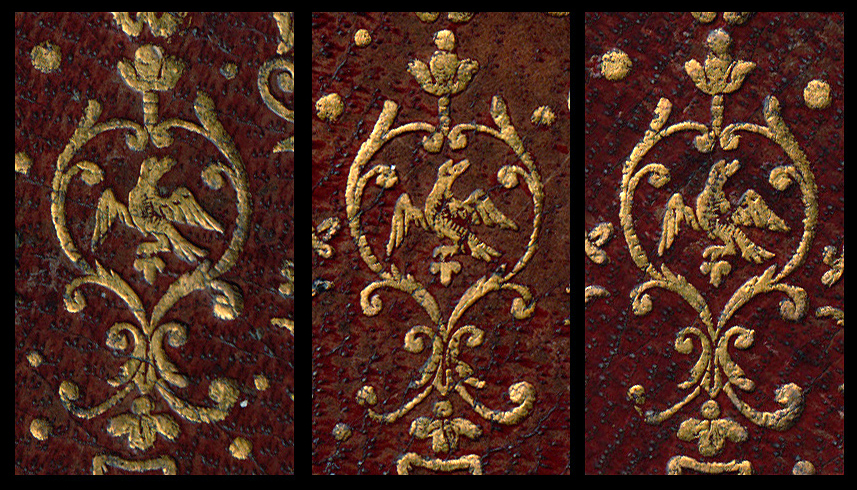
| Hardly enough can be said about dentelles à l'oiseau that are so often attributed to Derome le jeune, and so also the fer à l'oiseau. Possibly the most important decorative tool of the second half of the eighteenth century. We now know that Derome le jeune did not invent this tool and that some of the first dentelles à l'oiseau were actually made by Dubuisson, who probably made this particular example a full decade prior to Derome becoming a licensed binder in 1761. Thus the pd-4 examples shown above may be from the original tool that started it all, and in as much as the imprints appear to be exceptionally clean and fresh, we might be tempted to speculate that we are looking at one of the earliest examples. A keen collector will be quick to try to recognize the particular details of this imprint as opposed to similar fer à l'oiseau imprints that are found in the bindings of other artists from this period. However one must always bear in mind that the imprints from any one tool can vary enormously, as can be seen below in Comparative diagram 1. Here we see a scanned pd-4 example taken from a binding found in the British Library Database of Bookbindings, Davis541, the imprints from this binding have been dissected on a previous page. |
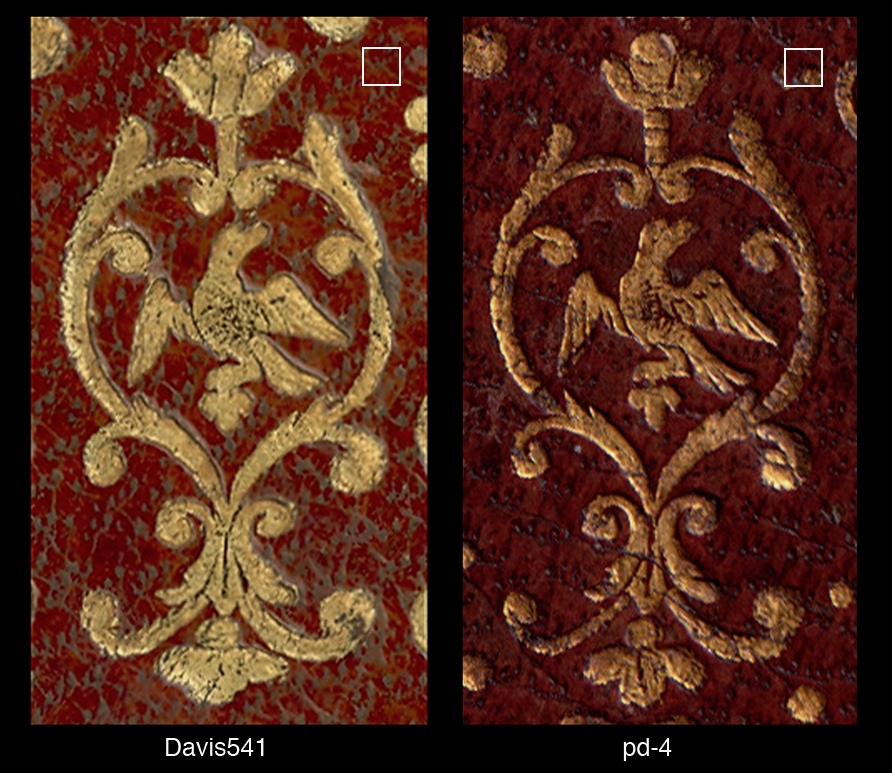
| Let us now quickly look at an interesting parallel dentelle à l'oiseau binding by Pierre-Paul Dubuisson, found in a relatively recent Christie's Catalogue COLLECTION MICHEL WITTOCK 2EME PARTIE, RELIURES A DECOR , 8 November 2004 Paris. SALE 5071 Lot 119 This item sold for $12,217 and the quality of the imprints appear nowhere as good as our example shown at the top of the page. However what I wanted to point out here is that this binding has been incorrectly attributed to Padeloup by the Christie's experts. If this sounds rather incredible, the error probably derives from the fact that Padeloup employed the Dubuisson's to bind and decorate works that were commissioned to him. In certain of these bindings we can even find Padeloup's etiquette, which has led experts in the past to declare such bindings and tooling as the work of Pedeloup. Thus we find still today experts who are not able to distinguish the tools of Padeloup from those of Dubuisson. |

| Below in Comparative Diagram 3, I show yet another catalogue reproduction of a Dubuisson binding that has been attributed to Padeloup by the auction experts. We see here a similar reference as that of the Christie's example above, to Cohen-de-Ricci, for the moment I do no have this work by Ricci, so I cannot comment further, but would be willing to bet that Ricci has been fooled by a Padeloup "etiquette". However what I wanted to point out here is that all three bindings reproduced here share a common tool (pd-7-4) that is not often found in Dubuisson's dentelles (click here to search for yourself this imprint in a widely varied collection of bindings by Dubuisson). |

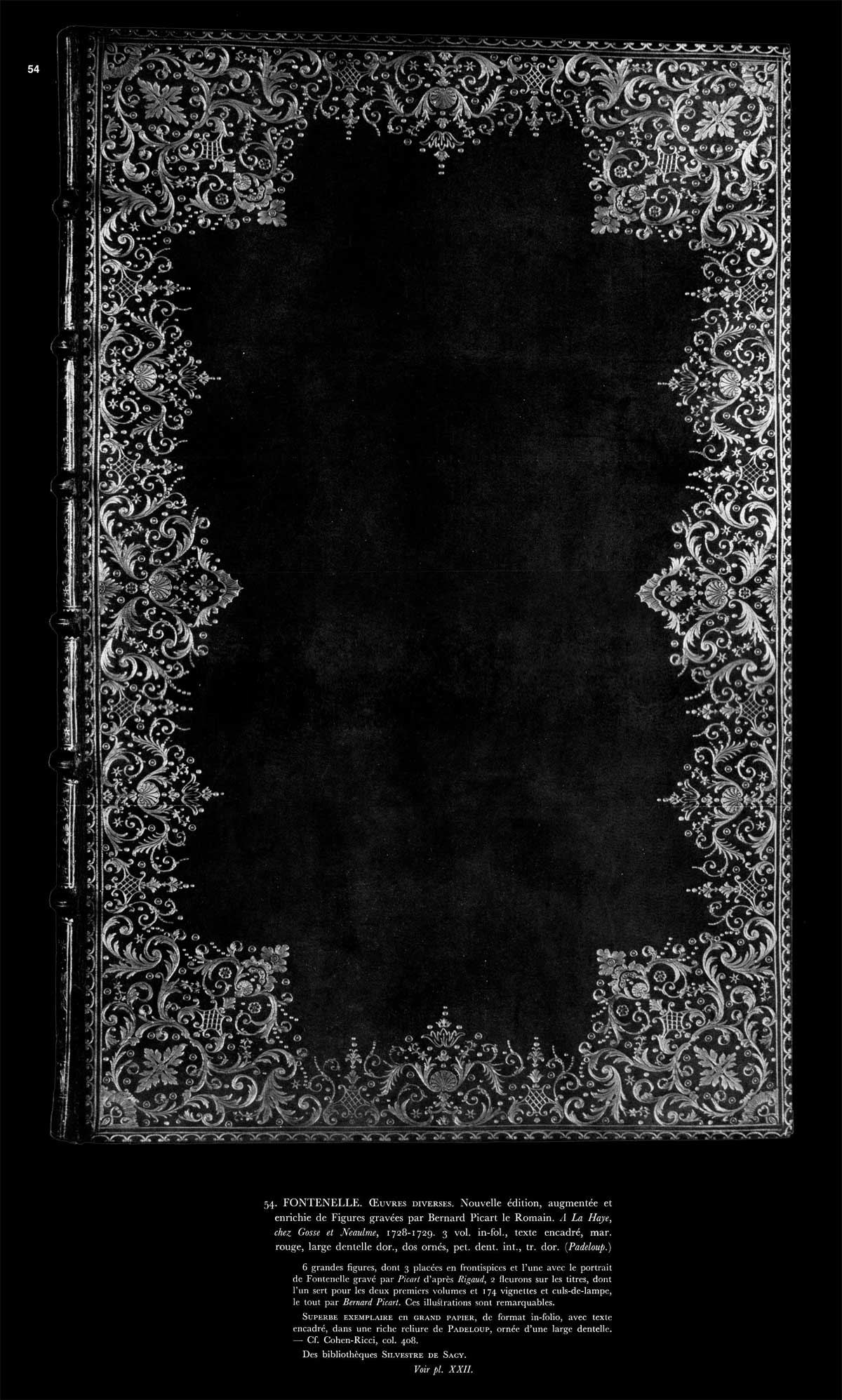
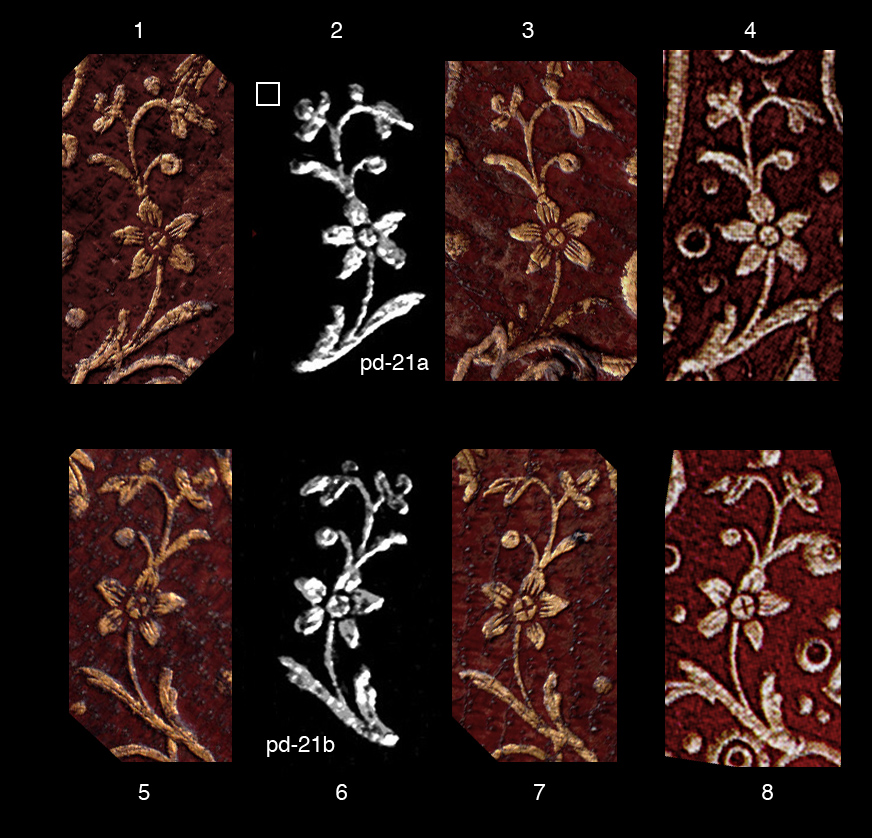
| In comparative Diagram 4, I have reproduced some dp-21 specimens from our eBay example at the top of the page, and compare them with two examples from a binding shown on the cover of John P. Harthan's 1984 publication Bookbindings (Victoria and Albert Museum). On page 142, Plate 5, he describes this binding as "Mosaic binding probably designed and bound by Jacques-Antoine Derome l'aine." I have tackled this sticky issue of Dubuisson's work being attributed to J. A. Derome (father of Derome le jeune) on previous page. However due to now possessing some very clear pd-21 specimens I have reproduced yet another comparative diagram here to further show that these imprints do derive from the same Dubuisson tools. Compare for yourself the difference between my type specimen shown in Comparative Diagram 3, item 2 and the finely detailed imprint of item 3, where we can actually observe some very fine detail lines in the petals of the flower. Such detail assures one of a powerful comparative tool, with which there will be no mistaking this Dubuisson imprint, providing of course, that one can find another specimen of a similar quality. Fortunately this was one of Dubuissons favorite pair of tools and he used them often. The studious collector will have no problem in detecting Dubuisson bindings once the eye has been honed to these peculiar reversed curves. |
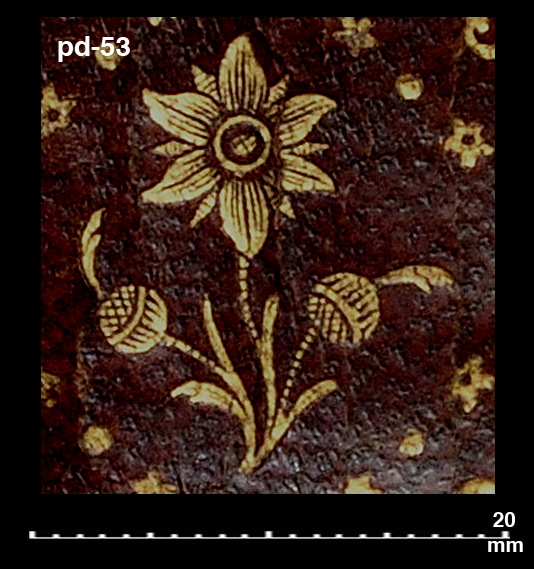
| In a study of gold tooled bindings made in France during the 18th century, there is no single fleuron more important than that which is found in the center of the spine compartments. Often this fleuron can be seen as a sort of binders signature, sometimes used repeatedly for a number of years. In many bindings we find that only the spines were decorated. and on bookshelves only the spines can reveal clues to a binders identity. Thus it is critically important to identify these central fleurons. Fortunately we find here an exceptional Dubuisson example, one that I was not aware of until only recently. I have reproduced it above, enlarged to 600 dpi, where we can see just how far the craftsman went to elaborate on this elegant motif, combining the pointillé style of the 17th century and the azured tools of the 16th. |
|
click on this link to go to the next page: Pierre-Paul Dubuisson - dentelle à l'oiseau, page 2
click on this link to return to: The Dubuisson links page. |
| information about the author | return to the home page of VIRTUAL BOOKBINDING |